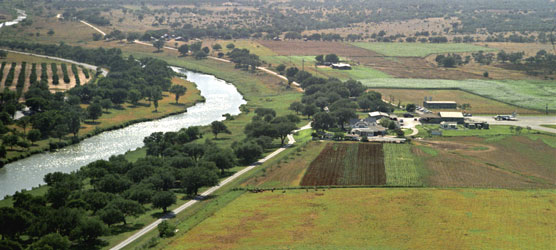 |
 | |
  | |
|
|
|
|
Lyndon B. Johnson National Historical Park
Management
|
|
|
|
|
|
 |

|
| LBJ Library photo by Yoichi Okamoto |
| Aerial view of the Pedernales River and LBJ Ranch looking west (1967) |
|
|
On December 2, 1969, Congress established Lyndon B. Johnson National Historic Site "to preserve in public ownership historically significant properties associated with the life of Lyndon B. Johnson." Renamed Lyndon B. Johnson National Historical Park on December 28, 1980, the park grew from the original site, which included President Johnson's boyhood home and birthplace, to an area of 674 acres encompassed within two distinct park units--the LBJ Ranch and Johnson City.
The two main purposes of the park are:
- To research, preserve, and interpret significant resources and influences associated with the life and heritage of Lyndon B. Johnson.
- To provide a variety of opportunities to experience the local and regional context that shaped the last frontier president, informed his policies and programs, and defined his legacy.
The management plans and information you will find in this section help guide the park in accomplishing these purposes. A number of these documents are in PDF format and require Adobe Acrobat Reader, available free online, to be viewed or printed.
|
|  |  |

|
 |
|
|
|
|
|
 |
|
Did You Know?
The cattle on the LBJ Ranch are descended from the same bloodline as the herd that Lyndon Johnson owned. They look more like 1960s Hereford cattle and so they can be called "history on the hoof." Lyndon B. Johnson National Historical Park
more...
|
|
|
|
Last Updated: January 25, 2007 at 15:32 EST |






